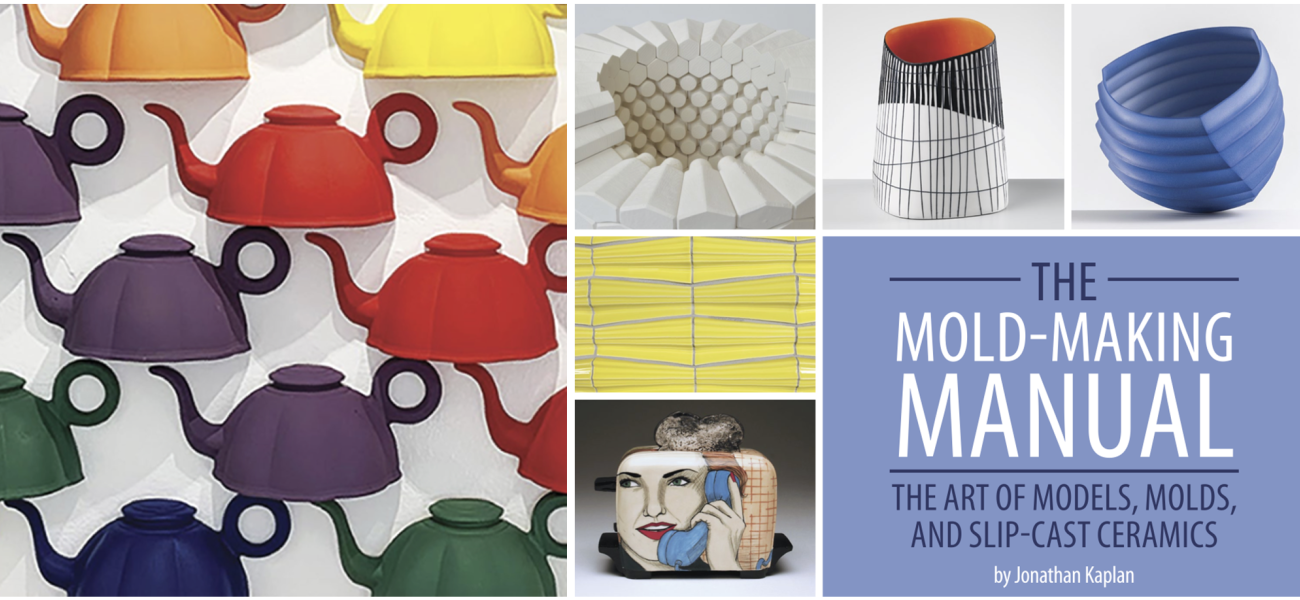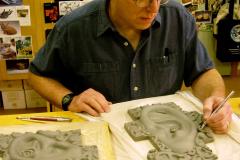I have been utilizing the techniques of plaster mold-making and ceramic slip-casting to create ceramic sculptures and vessels for the past fifty-six years. Beginning with my early experiments as an undergraduate student, I spent time observing these processes in the Ma and Pa greenware shops so popular in the 1960s, where people could select a Santa Claus mug or a clown cookie jar from the shelves to glaze and have fired. My instructor at the time, the mercurial Ken Ferguson, drove me to the Heart of America Ceramics Shop in Kansas City, KS, where he dropped me off to spend the day in their mold production facility, saying, “Notkin, you have the ideas, these people have the techniques.” It was a great introduction to some of the finer points of plaster mold-making. Since then, I have spent a lifetime of mostly self-taught experience, along with a couple of stints during the start-up of the Artist-in-Industry program at the Kohler Company in the 1970s.
I have also been collecting books on the myriad technologies of mold-making and casting in clay and have over twenty-five volumes in my library. I should mention that while many general texts on ceramics have designated a chapter on mold-making and casting, I have found these obligatory chapters often contain numerous incorrect bits of information, especially on mixing plaster or drying molds.


